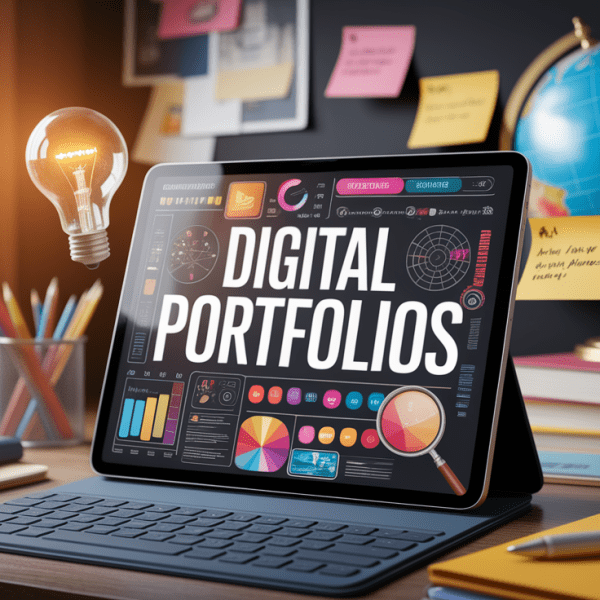Digital Harmony: Tools & Techniques for Seamless Tech-Enhanced Lesson Plans
Ready to transform your classroom into a dynamic, tech-savvy learning environment? You’re in the right place! Technology integration doesn’t have to feel overwhelming or disruptive – it can be your secret weapon for creating more engaging, personalized, and effective learning experiences. Let’s dive into the art of seamless educational technology integration that will have your students excited about learning and you feeling confident about your tech-enhanced teaching approach.
A Smooth Start: Integrating Technology Seamlessly
The key to successful instructional technology lies in understanding that tech-enhanced lesson plans involve strategically integrating technology tools and pedagogical strategies to create immersive, personalized, and collaborative learning experiences. Think of it as creating a perfect recipe – you wouldn’t throw all your ingredients into a pot without a plan, right?

Unlike standalone digital tools that feel like add-ons, effective integration aligns technology with curriculum goals, student needs, and pedagogical frameworks like project-based learning and constructivist approaches. This approach shifts education from passive consumption to active creation, enabling students to become problem-solvers and critical thinkers.
Before diving into the tech toolbox, it’s essential to start with effective lesson planning fundamentals. Remember, technology should enhance your already solid pedagogical foundation, not replace it!
Why Seamless Integration Matters
When you integrate technology seamlessly, you’re not just using digital learning tools – you’re creating an educational ecosystem where technology feels natural and purposeful. Students won’t see “tech time” as separate from “learning time” because they become one unified experience.
Setting the Stage: Defining Learning and Tech Objectives
Here’s where the magic happens! Creating powerful lesson plan goals and objectives becomes even more crucial when technology enters the picture. Your tech tools should directly support your learning outcomes, not overshadow them.

The Core Benefits of Technology Integration
Let’s explore why educational technology (EdTech) deserves a place in your classroom:
1. Enhanced Engagement
Interactive tools like gamified platforms, adaptive e-readers, and multimedia resources captivate learners through real-time feedback, dynamic visuals, and competency-based progression. For example, gamified systems allow students to earn digital badges for mastering skills, fostering intrinsic motivation. Tools like Kahoot! transform traditional quizzes into exciting game-show experiences!
2. Collaborative Problem Solving
Technology facilitates seamless teamwork by enabling shared digital workspaces. Students can co-author documents, curate research, or co-design projects using cloud-based tools like Google Workspace or Microsoft Teams, mirroring real-world workflows. This is where making lesson plans more engaging with collaborative online tools really shines!
3. Personalized Learning
Adaptive tech tools address diverse needs, including special support for students with disabilities. Features like text-to-speech functionality or visual aids ensure equity in access for learners from varied socioeconomic or ability backgrounds. This is how technology helps differentiate instruction for diverse learners effectively.
4. 21st-Century Skill Development
Integrating technology cultivates critical skills such as:
- Critical Thinking: Analyzing digital data and solving complex problems
- Creativity: Designing multimedia projects or coding interactive presentations
- Communication: Collaborating globally via video tools or social platforms
Must-Have Tools for Effortless Integration
Wondering about the best free tools for tech-enhanced lesson plans? Here’s your toolkit for success, organized by educational impact:

Interactive Learning Powerhouses
- Kahoot! – Transform assessments into engaging game experiences
- Nearpod – Create interactive presentations with real-time student participation
- Quizlet – Build custom flashcards and study games
- Edpuzzle – Turn any video into an interactive lesson
Collaboration Champions
- Google Classroom – Your all-in-one Learning Management System (LMS) for assignments and communication
- Microsoft Teams – Facilitate real-time teamwork and resource sharing
- Seesaw – Perfect for elementary digital portfolios and parent communication
Comprehensive Learning Management Systems
- Canvas (LMS) – Robust platform for secondary and higher education
- Schoology (LMS) – User-friendly interface with strong assessment tools
Project-Based Learning Enhancers
Podcasting tools and video editing software encourage creativity and application of concepts, turning your classroom into a multimedia production studio where students become content creators!
Techniques to Weave Technology into Every Lesson
Now for the fun part – simple techniques for integrating technology into daily lessons! Understanding the four phases of a lesson plan helps you identify perfect moments for tech integration.

The SAMR Approach
Use the SAMR model (Substitution, Augmentation, Modification, Redefinition) to gradually increase your tech integration sophistication:
- Substitution: Replace paper worksheets with digital versions
- Augmentation: Add interactive elements to digital worksheets
- Modification: Students create multimedia presentations instead of written reports
- Redefinition: Students collaborate globally on real-world problem-solving projects
Blended Learning Strategies
What is the difference between blended learning and online learning? Blended learning combines face-to-face instruction with online elements, creating the best of both worlds. Try these approaches:
- Station Rotation: Students rotate between tech stations and traditional activities
- Flipped Classroom: Students watch instructional videos at home, use class time for practice
- Flex Model: Students work at their own pace with teacher support as needed
Creative Ways to Use Technology for Classroom Engagement
- Virtual field trips using VR headsets or 360-degree videos
- Digital storytelling with multimedia presentations
- Online debates and discussions using collaborative platforms
- Augmented reality experiences that bring abstract concepts to life
Classroom Management & Implementation Best Practices
Managing the technical challenges of integrating technology doesn’t have to be stressful! Here are strategies for managing technology in a BYOD (Bring Your Own Device) classroom and beyond.
Technical Readiness Checklist
- Test all technology before class begins
- Have backup plans for tech failures
- Create clear digital citizenship guidelines
- Establish device usage expectations and consequences
Scaffolding Technology Integration
Introduce tools incrementally, pairing them with traditional methods during transition. This approach, supported by effective instructional strategies, helps students adapt gradually while maintaining learning momentum.
Digital Citizenship Education
Strategies for digital citizenship education in a tech-enhanced classroom include:
- Teaching responsible online behavior and communication
- Discussing digital footprints and privacy
- Addressing cyberbullying and online safety
- Promoting critical evaluation of online information
Professional Development Essentials
Success depends on teacher training through professional development programs to master pedagogical strategies. Don’t try to learn everything at once – focus on one or two tools at a time and gradually expand your toolkit.
Tracking Success: Measuring Impact and Iterating
How can you assess student understanding using technology? The key is using assessment tools (technology-based) that provide meaningful data about student learning and engagement.
Formative Assessment with Technology
- Real-time polling with tools like Kahoot! or Mentimeter
- Digital exit tickets using Google Forms or Padlet
- Interactive quizzes that provide immediate feedback
- Peer assessment tools for collaborative projects
Data-Driven Decision Making
Adaptive algorithms and learning analytics are increasingly used to tailor content to individual learning paces. Use this data to:
- Identify students who need additional support
- Adjust pacing based on class progress
- Modify activities that aren’t achieving learning objectives
- Celebrate successes and areas of growth
Student Voice and Feedback
Regularly assess whether technology enhances – rather than distracts from – core learning outcomes. Ask students:
- Which tools help them learn best?
- What technical challenges do they face?
- How does technology support their individual learning needs?
Closing the Loop: The Future of Tech-Enhanced Teaching
The future of education is bright, and you’re leading the way! As educational technology continues to evolve, focus on these emerging trends:
Personalization at Scale
AI-powered tools will increasingly provide personalized learning experiences that adapt to each student’s needs, learning style, and pace.
Equity and Access
Schools continue to prioritize tools that bridge the “digital divide,” ensuring underserved students access necessary tech for home learning. Your commitment to equitable access makes a real difference.
Constructivist Approaches
The shift from lectures to guided inquiry using tools like simulation software and interdisciplinary projects empowers students to construct their own understanding.
Your Next Steps
Remember, successful technology integration is a journey, not a destination. Start small, be patient with yourself and your students, and celebrate the wins along the way. Whether you’re using Google Classroom effectively in secondary education or exploring free edtech tools for classroom use, every step forward is progress worth celebrating.
The most important thing? Stay curious, keep experimenting, and remember that the best technology tool is the one that helps your students learn and grow. You’ve got this, and your students are lucky to have an educator who cares enough to create engaging, tech-enhanced learning experiences just for them!




